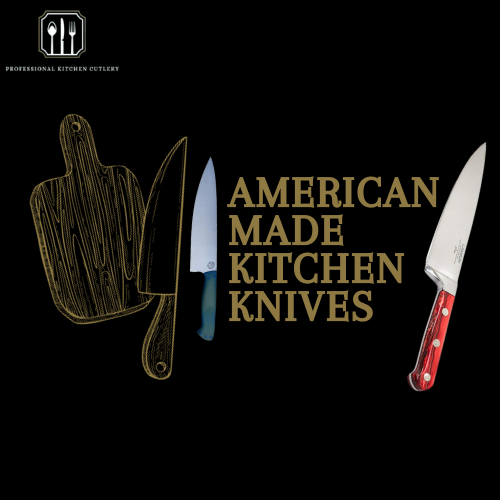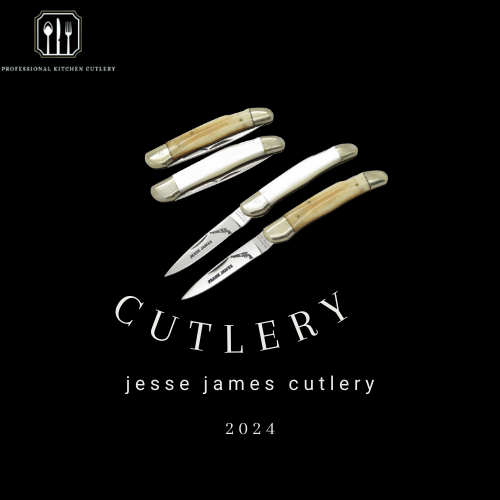How does american made kitchen knives?
In North America, kitchen knives are a common option because to their high quality and longevity. Cutco, Lamson, Dexter-Russel, Rada, and Warther are a few well-known brands. Chef and paring knives are among the many knives that Cutco, the biggest producer of kitchen cutlery in North America, supplies. Over 700 Americans work at the family-run Lamson firm in New York, which guarantees the life of its knives. A well-known brand in the USA since 1818.
What is the difference between German and American kitchen knives?
Kitchen knives come in two varieties: German and American. Because German knives have thicker blades and softer steel, they are more resilient and adaptable than American knives. American knives are composed of tougher steel and have a narrower blade with a sharper edge angle, yet they are still appropriate for a variety of jobs. American blades are lighter and more nimble than German knives, which are heavier and more solid. Additionally, they are renowned for having a full tang construction, which improves control and balance by extending the blade through the handle.
To summarize, the decision between German and American knives is based on the user’s preferences and the intended uses.
Which type of steel is better for a kitchen knife?
Kitchen knives come in two varieties: German and American. Because German knives have thicker blades and softer steel, they are more resilient and adaptable than American knives. American knives are composed of tougher steel and have a narrower blade with a sharper edge angle, yet they are still appropriate for a variety of jobs. American blades are lighter and more nimble than German knives, which are heavier and more solid. Additionally, they are renowned for having a full tang construction, which improves control and balance by extending the blade through the handle.
To summarize, the decision between German and American knives is based on the user’s preferences and the intended uses.
How do I sharpen my kitchen knives at home?
To keep a knife sharp and long-lasting, you need a sharpening stone. There are several ways to sharpen knives at home, such as an electric sharpener, a long, thin rod, or a whetstone. One instrument that can be put on a level surface and moistened with water is a whetstone. Starting from the base of the blade and working your way up to the tip, run the knife along the stone at an angle of between 15 and 20 degrees.
How do I know when my knife needs sharpening?
The type of steel, how often you use them, and other factors all affect how often you should sharpen your kitchen knives. Knives should be sharpened approximately every three to six months, although this is only a general guideline. Maintaining a sharp knife is essential for cooking, particularly when slicing through harder meats or bones. Frequent honing can help keep blades sharp and increase the intervals between sharpenings. Every two to four uses, or before heavy use, like cutting bones or joints, honing should be done.
How often should I sharpen my kitchen knives?
The type of steel, how often you use them, and other factors all affect how often you should sharpen your kitchen knives. Sharpening should be done roughly every three to six months, although this is just a general guideline. Maintaining a sharp knife is crucial for cooking, particularly when slicing through harder meats or bones.
How often should I hone my kitchen knives?
Kitchen knives can be kept sharper longer by regularly honing them. This is especially beneficial after two to four usage or heavy use, like chopping bones or joints.
Can I use a whetstone on serrated knives?
Sharpening serrated knives using a whetstone is not advised since it might smooth out the serrations, making them more equivalent to ordinary chef’s blades. For more efficient sharpening, consider using a tapered diamond sharpening rod. Place the rod, held in your dominant hand, at an angle of 15 to 20 degrees, against one of the knife’s serrated “scallops.” Ten to twenty fast strokes should be applied to each serration as you move the rod back and forth across it, until a little burr forms on the opposite side of the blade.
After removing the burr by running the opposite side of the blade flat along the rod two or three times, wash and dry the knife.
how to use american made kitchen knives?
Using the appropriate kitchen knife for the job is critical because they are indispensable tools for a variety of jobs. Making sure your fingers stay out of the way, hold the handle with your dominant hand and grab the blade with the other. Certain chores, like slicing bread or chopping vegetables, call for different knives. A sharp knife can be sharpened with a stone or rod and is safer and more effective. To keep your countertop safe and the knife from dulling, always use a cutting board.
Clean the knife with soap and water after each use, pat dry with a fresh towel, and store it somewhere secure.
What is the difference between German and American kitchen knives?
The steel hardness and edge angle of German and American kitchen knives are different. German knives are robust and easier to sharpen because they are composed of softer steel. Their rounder belly and broader blade make them adaptable to a variety of activities. However, because American knives are composed of stronger steel, they are more accurate and sharp. They are perfect for slicing and chopping since they have a thinner blade with a sharper edge angle. American blades are lighter and more nimble than German knives, which are heavier and more solid.
Additionally, they are renowned for having a full tang construction, which improves control and balance. The tasks required and one’s personal preference will determine which option is best.



